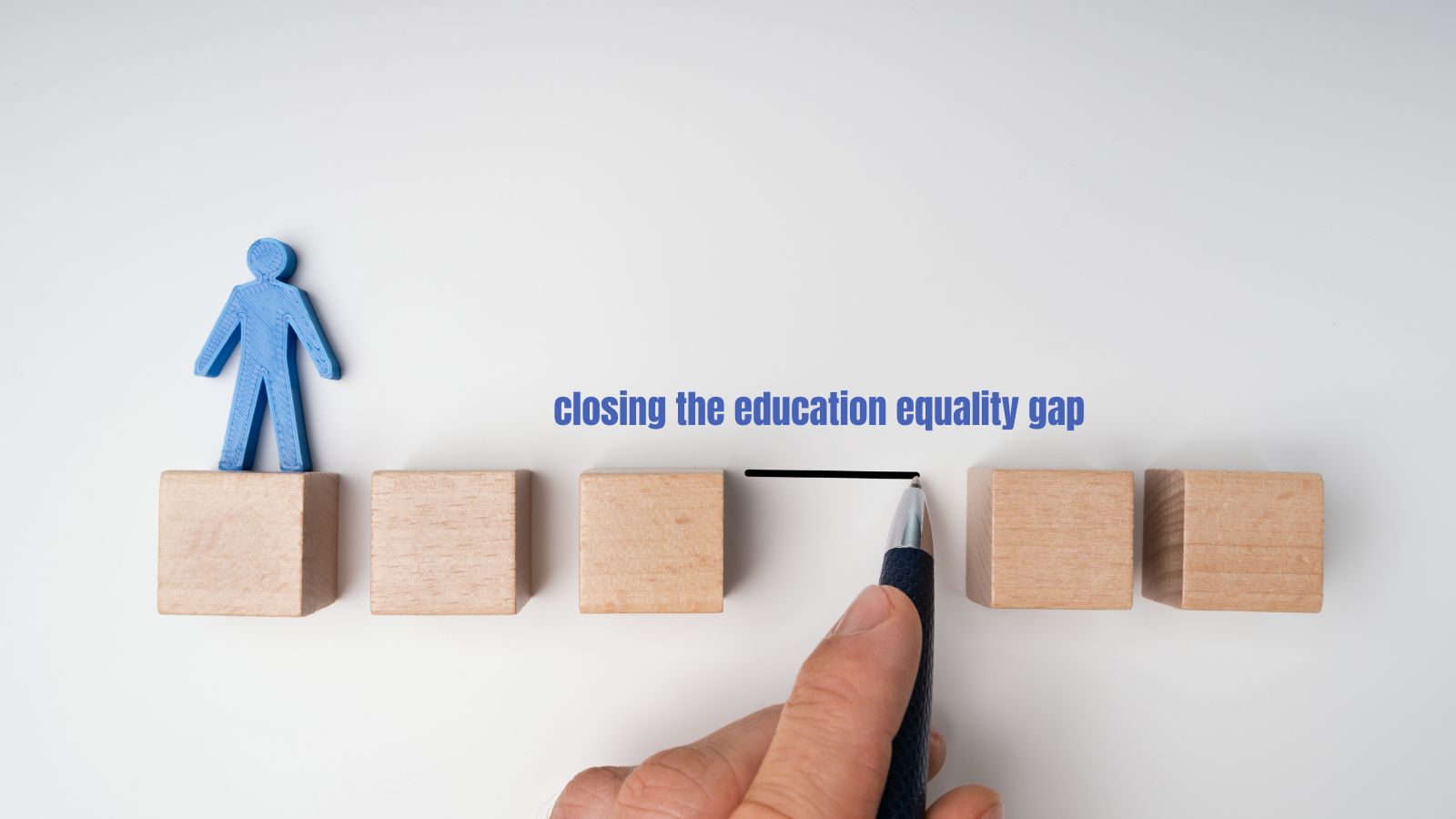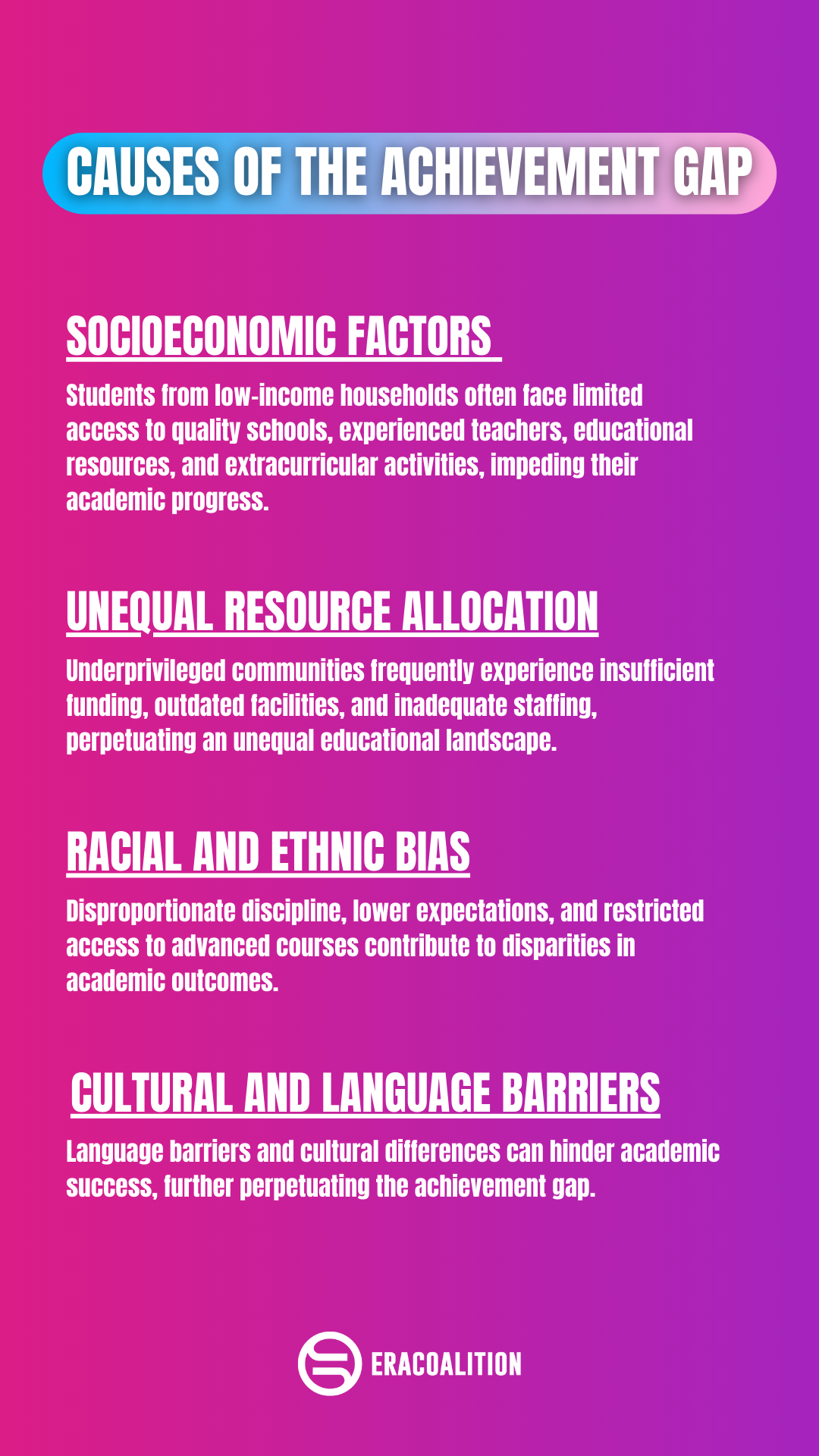This is a war on us all
February 18, 2025
EDUCATION EQUALITY --- Education has long been championed as the great equalizer, offering individuals the opportunity to thrive regardless of their backgrounds. However, in the United States, the persistent issue of the achievement gap has hindered the realization of equal opportunity for all. In this blog post, we will delve into the concept of the achievement gap, explore its causes, and examine how the adoption of the Equal Rights Amendment (ERA) can contribute to bridging this gap and fostering educational equality.
The achievement gap refers to the disparities in academic performance among different groups of students, often along racial, socioeconomic, or ethnic lines. These gaps manifest in various ways, such as variations in test scores, graduation rates, access to advanced courses, and college enrollment. Overcoming this gap is crucial for achieving equality and ensuring that education serves as a pathway to social mobility for all Americans. See here to learn more about what the racial education gap looks like in the U.S. right now.


Socioeconomic Factors: Economic disparities significantly contribute to the achievement gap. Students from low-income households often face limited access to quality schools, experienced teachers, educational resources, and extracurricular activities, impeding their academic progress.
Unequal Resource Allocation: Disparities in the distribution of educational resources across districts and schools exacerbate the achievement gap. Under-resourced communities frequently experience insufficient funding, outdated facilities, and inadequate staffing, perpetuating an unequal educational landscape.
Racial and Ethnic Bias: Implicit bias and systemic racism persist within the education system, resulting in unequal treatment and opportunities for marginalized students. Disproportionate disciplinary actions, prejudicially lower expectations, and restricted access to advanced courses contribute to disparities in academic outcomes.
Cultural and Language Barriers: Students from non-English speaking backgrounds and diverse cultures may face difficulties adapting to an educational system that does not adequately cater to their unique needs. Language barriers and cultural differences can hinder academic success, further perpetuating the achievement gap.
The Equal Rights Amendment (ERA), when added to the Constitution, can play a significant role in addressing the achievement gap and fostering educational equality. Education overall is a pathway to gender equality.
Eliminating Gender Discrimination: The ERA would prohibit gender-based discrimination, ensuring that educational opportunities and resources are distributed without bias, enabling people of all gender identities and expressions to overcome gender stereotypes and have equal access to quality education.
Challenging Intersectional Discrimination: The ERA's comprehensive approach extends beyond gender to address multiple forms of discrimination. By recognizing and challenging intersectional barriers, the amendment can help break the cycle of educational inequality faced by individuals at the intersection of gender, race, socioeconomic status, and other identities.
Empowering Educational Policies: The ERA would empower policymakers to implement proactive measures that promote educational equality. It would encourage the creation of inclusive curricula, equitable resource allocation, and programs that address the specific needs of marginalized communities, contributing to a more equitable education system.
Cultivating a Culture of Equality: By codifying gender equality into the Constitution, the ERA can help foster a culture that values and prioritizes equal educational opportunities for all. This cultural shift can create an environment that supports and nurtures students, regardless of their gender or background, ensuring that they have the resources and support needed to succeed.

Bridging the achievement gap and achieving educational equality requires a multifaceted approach. By addressing the root causes of the gap and embracing the principles of the Equal Rights Amendment, we can make substantial progress toward an education system that empowers every student, irrespective of their gender, race, or socioeconomic status.
The ERA serves as a catalyst for change, encouraging policies and practices that bridge the achievement gap and create an educational landscape where all students have equal opportunities to thrive.
Educational equality is not just an aspiration but a fundamental right for all Americans.
If you liked this post, check out these resources for a little more info on the Equal Rights Amendment: